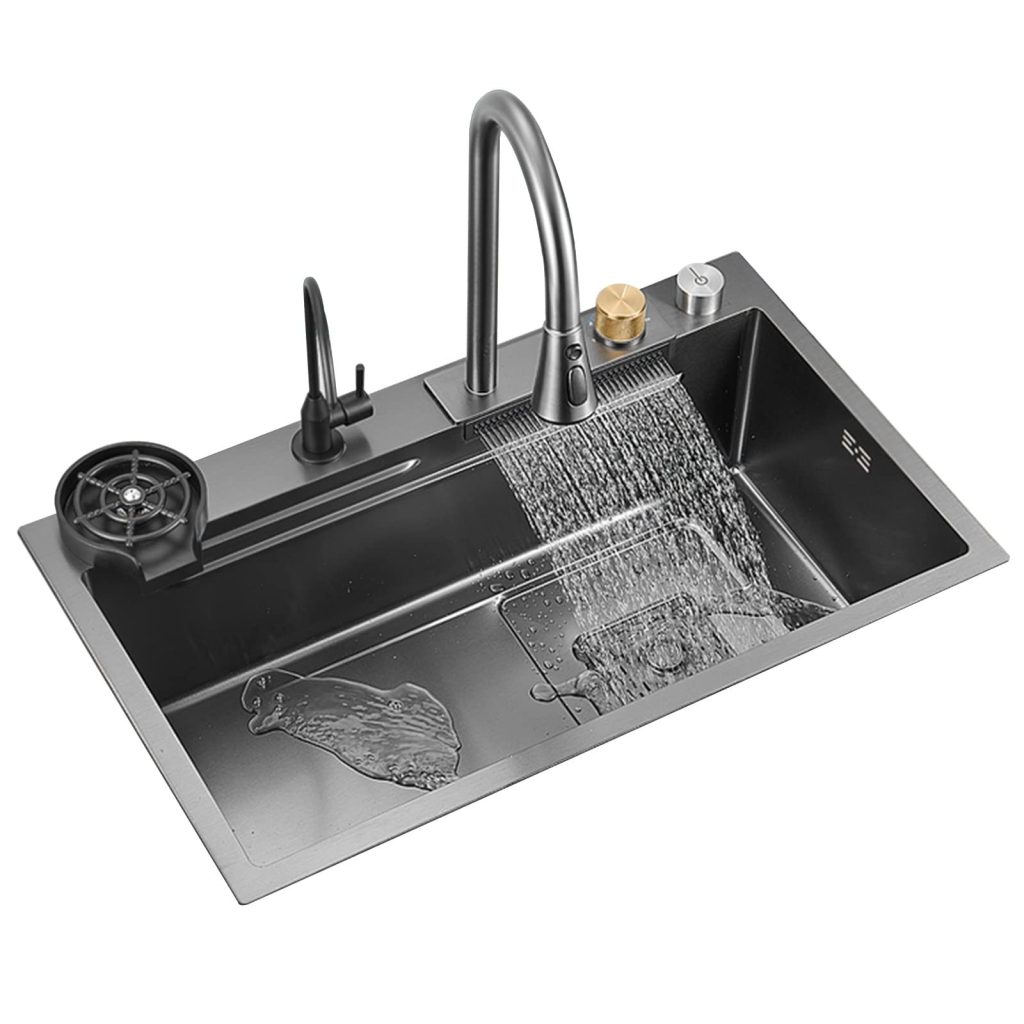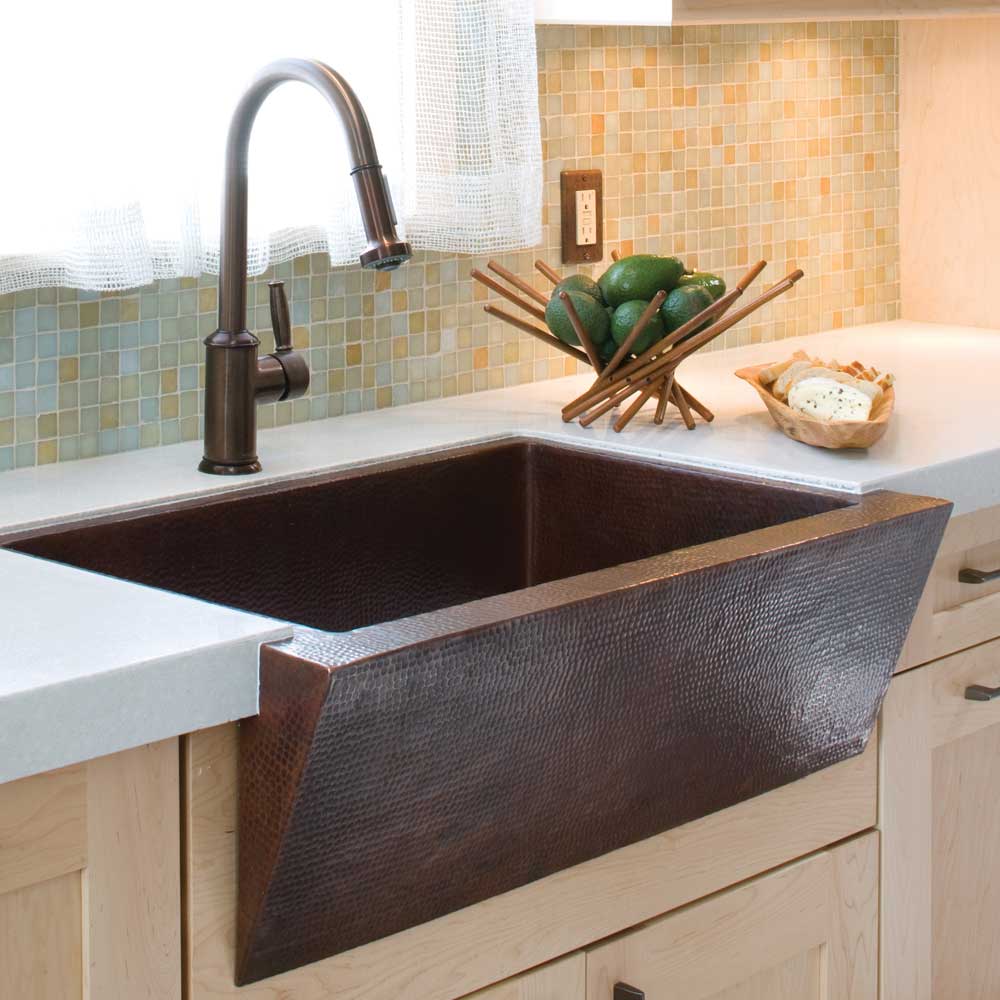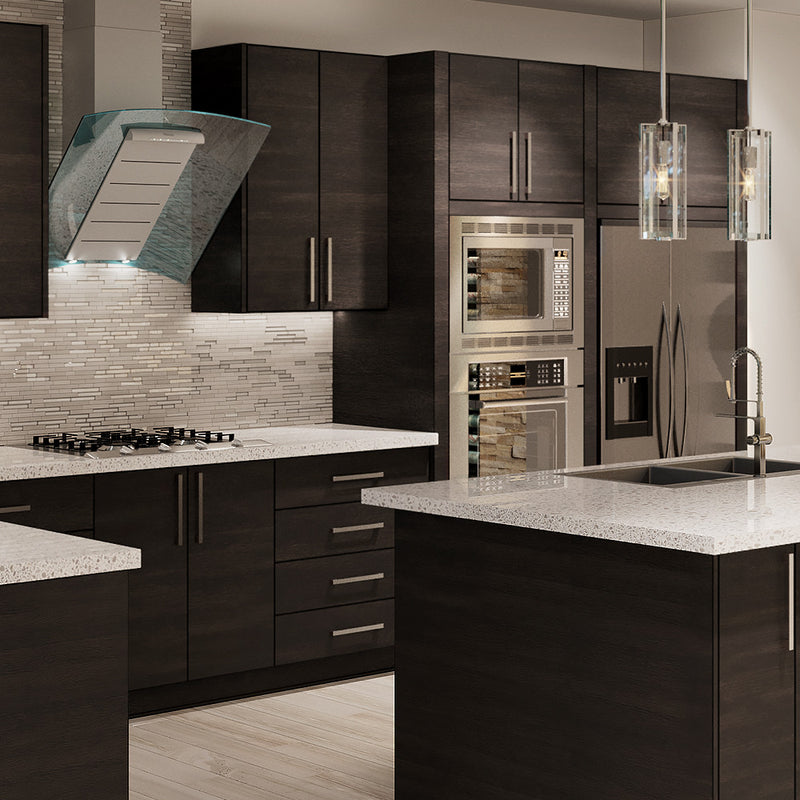Recognizing the Signs of a Clogged Kitchen Sink with Garbage Disposal
A clogged kitchen sink with garbage disposal often gives clear signs. Watch for these clues. If water drains slowly or stands still, you likely have a clog. Gurgling sounds while your disposal runs can also suggest a blockage. Another sign is an unpleasant odor coming from the drain. If the disposal won’t turn on, check if there’s a clog causing an overload. These signs tell you it’s time to act and clear the drain.

Safety First: Unplugging Your Garbage Disposal
Ensuring safety is crucial when fixing a clogged kitchen sink with garbage disposal. Always unplug the disposal first. This step is important to prevent accidents. Never work on a disposal that is plugged in. After unplugging, check if the switch is off too. This provides an extra layer of safety. Simple missteps can lead to injury. Avoid these by making sure power is off. Following this, use a natural cleaning method or other techniques to tackle the clog.
Natural Drain Cleaning Methods: Baking Soda and Vinegar
Using natural drain cleaning methods is both safe and effective for your garbage disposal. Baking soda and vinegar are gentler alternatives to harsh chemicals. This natural remedy is a common household solution for a clogged kitchen sink with garbage disposal. Here is how to use it:
- Pour a quarter-cup of baking soda down the drain.
- Follow with a half-cup of white vinegar.
- Let the mixture fizz for a few minutes; this helps break down the clog.
- Flush the drain with hot water from the tap for several minutes.
This process may not only clear minor blockages but also neutralize unpleasant odors. Hot water helps dislodge any remaining debris loosened by the fizzy reaction. If the clog persists, you can repeat the step above. Using baking soda and vinegar is a simple, eco-friendly method to handle a clogged kitchen sink with garbage disposal. Keep in mind that you should also run cool water while operating the disposal for regular maintenance to prevent future clogs.
Techniques for Clearing Persistent Clogs
If you’ve tried natural methods and the clog is still there, try these techniques:
- Check the drain with a flashlight. Look for any visible blockage and remove it with pliers or tongs if possible.
- If visible blockage is not the issue, try using a plunger. Before plunging, make sure to clamp your dishwasher hose if applicable. This prevents dislodgment.
- Fill the sink with enough water to cover the plunger’s lip before plunging. Use quick, forceful moves and check if the water drains.
- Repeat the plunging process a few times if needed. Be patient as some clogs require persistence.
- If the water begins to flow, run hot water for a few minutes. This will flush out any residual debris ensuring the clog does not recur.
Remember, using too much force can damage pipes. If you use a plunger, do it with care. For clogs that won’t clear, it may be time to call a professional plumber.

Using a Plunger Effectively on Garbage Disposal Drains
Sometimes natural methods are not enough to clear a clogged kitchen sink with garbage disposal. When this happens, using a plunger can be an effective solution. Here’s how to do it safely and efficiently:
- Before plunging, ensure that the garbage disposal is off and unplugged. This avoids accidents.
- If you have a dishwasher connected, use a clamp on the dishwasher hose to prevent disconnection.
- Fill the sink with water to cover the lip of the plunger. This creates a strong seal.
- Place the plunger firmly over the drain. Make sure it covers the opening completely.
- Use brisk and forceful plunges to dislodge the clog. Do not be overly aggressive as this can damage pipes.
- After several plunges, lift the plunger to see if the water drains. If not, repeat a few times.
- Once the water starts flowing, run hot water down the drain for several minutes. This clears any remaining debris.
Remember to plunge with caution to prevent damage to your garbage disposal or pipes. If water still does not drain after repeated attempts, it may indicate a more serious problem. It could be time to call a professional to handle your clogged kitchen sink with garbage disposal.
Precautions When Dealing with a Dishwasher-Connected Garbage Disposal
When your garbage disposal links to a dishwasher, care is key. Here are steps to stay safe and efficient:
- Shut Off Power: Turn off the disposal and dishwasher before you start. This prevents accidents.
- Check for Blockages: Inspect the hose that connects the dishwasher to the disposal. Remove any clogs you find.
- Secure the Hose: Attach a clamp to the dishwasher hose. This keeps it in place while you work.
- Avoid Chemicals: Don’t pour harsh chemicals down the disposal. They can harm the disposal unit and dishwasher.
- Run Water: After unclogging, let water run through the disposal. This ensures all debris clears out.
- Test the Dishwasher: Once you’ve finished, run the dishwasher. Check for leaks or signs of clogs.
- Reset Systems: Reset the garbage disposal following the manufacturer’s instructions. Turn the power back on for both devices.
Taking these precautions helps prevent damage and keeps your kitchen systems working well. If issues persist, call a professional.

When to Call an Emergency Plumbing Team
Sometimes, despite your best efforts, a clogged kitchen sink with garbage disposal won’t respond to home remedies. If your sink still refuses to drain after you’ve exhausted all methods, it’s time to call an emergency plumbing team. Here’s when you should make that call:
- When Water Stays Still: If standing water persists, don’t delay in calling a plumber.
- Odor Persists: A lingering bad odor could indicate a deeper issue.
- Multiple Attempts Fail: If repeated plunging and natural methods don’t work, a plumber can help.
- Visible Damage: If you see damage to your pipes or garbage disposal, professional assistance is necessary.
- Overflow Risk: To prevent water damage, call a plumber if there’s a risk of overflow.
- Health Concerns: Standing water with food waste can be a health hazard—don’t wait to address it.
Emergency plumbers are equipped to handle tough clogs and can also check for any other underlying issues that might not be visible. They have the tools and expertise to safely and quickly resolve the problem without causing further damage to your plumbing system or the garbage disposal unit. Taking timely action will protect your home from water damage and ensure your kitchen is back to normal as soon as possible.
Professional Services for Drain Cleaning and Garbage Disposal Repair
When home remedies fail to clear a clogged kitchen sink with garbage disposal, professional help is necessary. Here’s what professional services offer:
- Expert Assessment: Skilled plumbers can quickly identify the cause of a clog.
- Appropriate Tools: They have special tools to clear clogs without damaging pipes or disposals.
- Garbage Disposal Repair: If the issue lies with the disposal itself, repair or replacement services are available.
- Long-term Solutions: Pros can spot potential future problems and suggest fixes. This can prevent repeat clogs.
- Safety: Professionals ensure that all work is done safely, protecting both the client and the plumbing system.
When you notice signs of trouble, such as persistent odors or standing water, reach out to a trusted plumbing team. They can offer fast and reliable drain cleaning services and handle any necessary garbage disposal repairs. This ensures your kitchen cabinet with sink returns to functioning smoothly with minimal disruption to your home life.

Remember, efficient plumbing is crucial for a healthy, hygienic kitchen. If you’re faced with a plumbing emergency, or if your garbage disposal is broken, don’t hesitate to call for professional support. By doing so, you avoid the risks of DIY fixes and get the peace of mind that comes with expert service.
